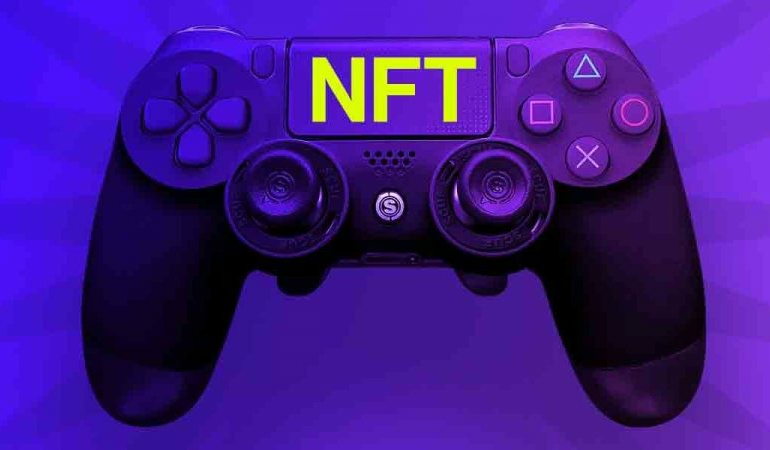in <em class="postcategory"Art, Technology | August 9th, 2022 Leave a Comment
(adsbygoogle = window.adsbygoogle || []).push({});
Damien Hirst is into NFTs. Some will regard this as a reflection on the artist, and others a reflection on the technology. Whether you take those reflections to be positive or negative reveals something about your own concept of how the art world, the business world, and the digital world intersect. So will your reaction to The Currency, Hirst’s just-completed art project and technological experiment. Launched in July of last year, it produced 10,000 unique non-fungible tokens “that were each associated with corresponding artworks the British artist made in 2016,” as Artnet’s Caroline Goldstein writes. “The digital tokens were sold via a lottery system for $2,000.”
Hirst also laid down an unprecedented condition: he announced “that his collectors would have to make a choice between the physical artwork and its digital version, and set a one-year deadline — asking them, in effect, to vote for which had more lasting value.” For each buyer who chooses the original work, Hirst would assign its NFT to an inaccessible address, the closest thing to destroying it. And for each buyer who chooses the NFT, Hirst would throw the paper version onto a bonfire. The final numbers, as Hirst tweeted out at the end of last month, came to “5,149 physicals and 4,851 NFTs (meaning I will have to burn 4,851 corresponding physical Tenders).” Hirst also retained 1,000 copies for himself.
“In the beginning I had thought I would definitely choose all physical,” Hirst explains. “Then I thought half-half and then I felt I had to keep all my 1,000 as NFTs and then all paper again and round and round I’ve gone, head in a spin.” In the end he went wholly digital, having decided that “I need to show my 100 percent support and confidence in the NFT world (even though it means I will have to destroy the corresponding 1000 physical artworks).” Perhaps this was a victory of Hirst’s neophilia, but then, those instincts have served him well before: few living artists have managed to draw such public fascination, enamored or hostile, for so many years straight — let alone such formidable sale prices, and not just for his stuffed shark.
“I’ve never really understood money,” Hirst says to Stephen Fry in the video above. (You can watch an extended version of their conversation here.) “All these things — art, money, commerce — they’re all ethereal,” ultimately based on nothing more than “belief and trust.” Returning to the techniques of his early “spot paintings” — those he made himself before farming the task out to steadier-handed assistants — and minting the results into unique digital objects for sale was perhaps an attempt to get his head around the even less intuitive concept of the NFT. All told, The Currency brought in about $89 million in revenue. More telling will be the price of its tokens on the secondary market, where they’re changing hands at the moment for around $7,000: a price impossible properly to evaluate for now, and thus not without the thrilling ambiguity of certain modern artworks.
via Artnet
Related content:
What are Non-Fungible Tokens (NFTs)? And How Can a Work of Digital Art Sell for $69 Million
Brian Eno Shares His Critical Take on Art & NFTs: “I Mainly See Hustlers Looking for Suckers”
The Art Market Demystified in Four Short Documentaries
Mark Rothko Is Toast… and More Edible Art from SFMOMA
Damien Hirst Takes Us Through His New Exhibition at Tate Modern
Based in Seoul, Colin Marshall writes and broadcasts on cities, language, and culture. His projects include the Substack newsletter Books on Cities, the book The Stateless City: a Walk through 21st-Century Los Angeles and the video series The City in Cinema. Follow him on Twitter at @colinmarshall, on Facebook, or on Instagram.
by Colin Marshall | Permalink | Comments (0) |
We’re hoping to rely on our loyal readers rather than erratic ads. To support Open Culture’s educational mission, please consider making a donation. We accept PayPal, Venmo (@openculture), Patreon and Crypto! Please find all options here. We thank you! ![]()
![]()
Be the first to comment.
document.getElementById( “ak_js_1” ).setAttribute( “value”, ( new Date() ).getTime() );
Get the best cultural and educational resources on the web curated for you in a daily email. We never spam. Unsubscribe at any time.
FOLLOW ON SOCIAL MEDIA
medianet_width=’160′; medianet_height= ‘600’; medianet_crid=’758818431′;
Open Culture scours the web for the best educational media. We find the free courses and audio books you need, the language lessons & educational videos you want, and plenty of enlightenment in between.
©2006-2022 Open Culture, LLC.
All rights reserved.
if you like our Facebook fanpage, you’ll receive more articles like the one you just read!


